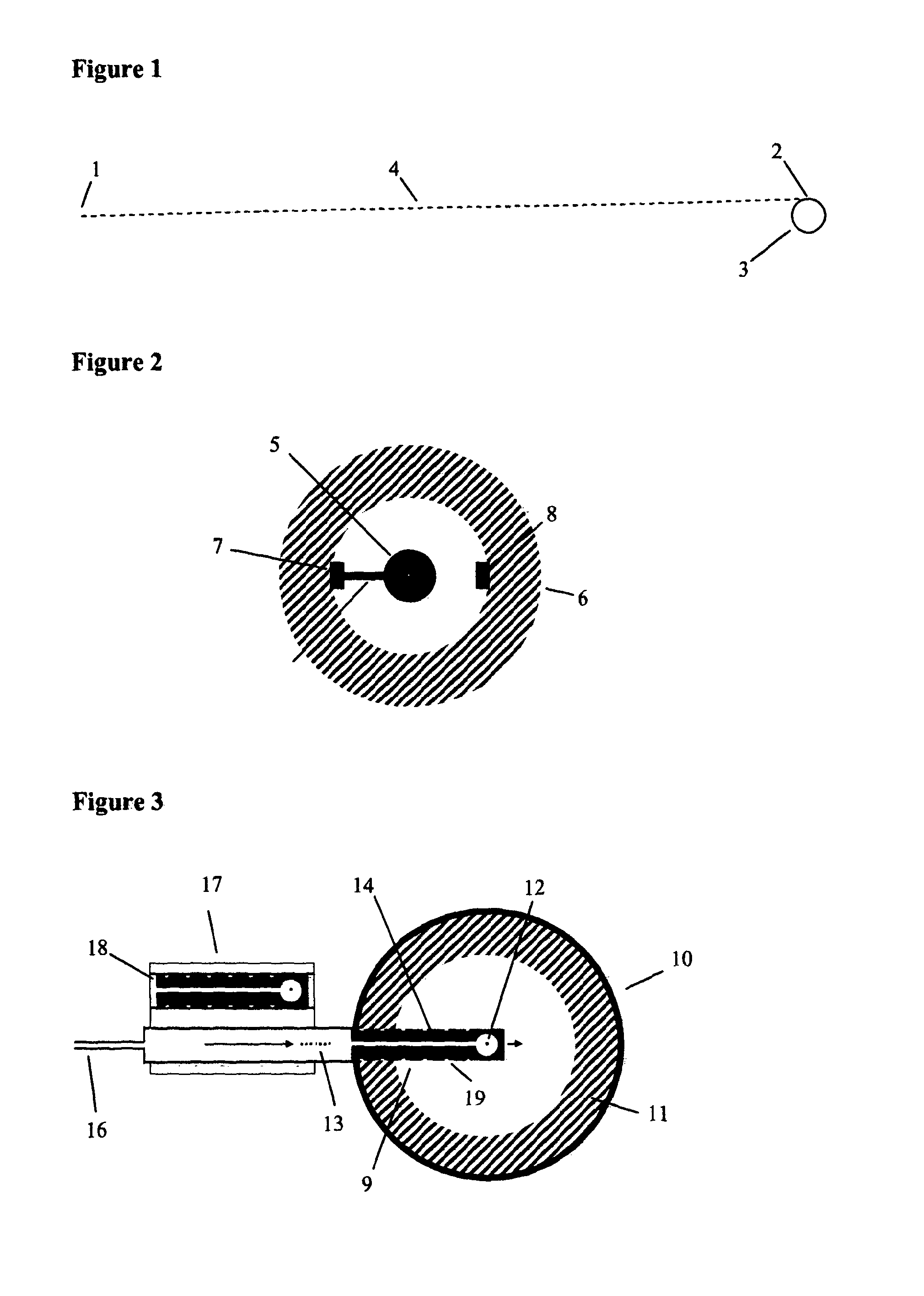Method of Providing Impact in Vacuum
a vacuum and impact technology, applied in the direction of electrical equipment, nuclear reactors, nuclear energy generation, etc., can solve the problems of evaporation of atoms from the surface, charge that can be placed on a macroscopic body, and 10 mg of a bullet mass to that speed, so as to achieve good vacuum, capture efficiency, and easy to be made sufficiently cold
- Summary
- Abstract
- Description
- Claims
- Application Information
AI Technical Summary
Benefits of technology
Problems solved by technology
Method used
Image
Examples
Embodiment Construction
[0027]It might be thought that the ‘virtual bullet’ formed by the coalescing particles will be less dense than a normal solid of the same material, e.g. if the particles are perfect uniform spheres then at least by the ratio of the spherical packing fraction ˜0.74, and less than that if allowance is made for inevitable inaccuracies in their shape, position and size. However as the back layers of the bullet are travelling faster than the forward layers, the bullet will compress to many times the normal density of the raw material as (or just before or after) it strikes the target.
[0028]In each of FIGS. 5-9, parts (a), (b), (c) and (d) show particle positions (black circles) at consecutive timesteps en route to striking the target (hatched). For clarity the drawings are necessarily not to scale, with particle size vastly exaggerated, and particle number vastly reduced, compared to a likely implementation. FIG. 5 shows a basic configuration: particles come together to form a precompres...
PUM
 Login to View More
Login to View More Abstract
Description
Claims
Application Information
 Login to View More
Login to View More - R&D
- Intellectual Property
- Life Sciences
- Materials
- Tech Scout
- Unparalleled Data Quality
- Higher Quality Content
- 60% Fewer Hallucinations
Browse by: Latest US Patents, China's latest patents, Technical Efficacy Thesaurus, Application Domain, Technology Topic, Popular Technical Reports.
© 2025 PatSnap. All rights reserved.Legal|Privacy policy|Modern Slavery Act Transparency Statement|Sitemap|About US| Contact US: help@patsnap.com



